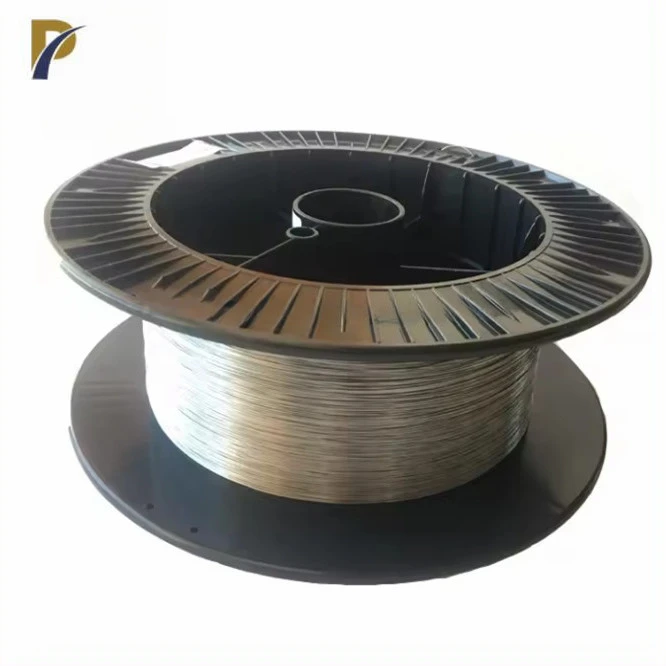Molybdenum rhenium wire has emerged as a crucial material in the semiconductor industry, revolutionizing the production of advanced electronic devices. This high-performance alloy combines the exceptional properties of molybdenum and rhenium, offering unparalleled strength, thermal stability, and electrical conductivity. As the demand for smaller, faster, and more efficient semiconductors continues to grow, molybdenum rhenium wire plays an indispensable role in various applications, from integrated circuit manufacturing to advanced packaging technologies. Its unique characteristics enable semiconductor manufacturers to push the boundaries of device performance and reliability, making it an essential component in the ever-evolving landscape of modern electronics.
Properties and Composition of Molybdenum Rhenium Wire
Unique Alloy Composition
Molybdenum rhenium wire is an advanced alloy that combines the strengths of two remarkable elements. Molybdenum, known for its high melting point and excellent mechanical properties, forms the base of this alloy. Rhenium, a rare and valuable metal, is added in specific proportions to enhance the wire's overall performance. The typical composition ranges from 35% to 47.5% rhenium content, with molybdenum making up the remainder. This carefully balanced blend results in a material that surpasses the individual properties of its constituent elements.
Superior Mechanical Characteristics
The inclusion of rhenium in the molybdenum matrix imparts exceptional strength and ductility to the wire. At room temperature, molybdenum rhenium wire exhibits a tensile strength that can exceed 1,800 MPa, significantly higher than pure molybdenum. This enhanced strength is maintained even at elevated temperatures, making it ideal for high-stress applications in semiconductor manufacturing. The wire's improved ductility also allows for easier handling and forming during the production of intricate semiconductor components.
Thermal and Electrical Properties
One of the most valuable attributes of molybdenum rhenium wire is its outstanding thermal stability. The alloy retains its structural integrity and mechanical properties at temperatures well above 2000°C, surpassing many other materials used in semiconductor fabrication. This high-temperature resilience is coupled with excellent thermal conductivity, enabling efficient heat dissipation in electronic devices. Additionally, the wire possesses low electrical resistivity, making it an ideal candidate for applications requiring both high-temperature stability and electrical conductivity.
 |
 |
Manufacturing Processes and Quality Control
Advanced Production Techniques
The manufacturing of molybdenum rhenium wire includes a arrangement of sophisticated processes to guarantee the highest quality and consistency. The generation ordinarily starts with powder metallurgy methods, where high-purity molybdenum and rhenium powders are absolutely mixed and compacted. This blend experiences sintering at greatly high temperatures, frequently surpassing 2000°C, to make a homogeneous alloy ingot. The ingot is at that point subjected to different stages of hot working, counting extrusion and swaging, to refine its microstructure and achieve the craved wire diameter.
Precision Drawing and Annealing
To produce wire with exceptionally small diameters, often required in semiconductor applications, the material undergoes a series of precision drawing operations. This process involves pulling the wire through progressively smaller diamond dies, reducing its diameter while simultaneously increasing its length and strength. Between drawing stages, the wire is carefully annealed to relieve internal stresses and maintain its ductility. The annealing process is crucial, as it allows for further reduction in diameter without compromising the wire's structural integrity or performance characteristics.
Rigorous Quality Assurance
Given the basic nature of semiconductor applications, quality control in molybdenum rhenium wire production is vital. Producers utilize a battery of tests and inspections all through the generation handle to guarantee consistency and reliability. These include:
- X-ray fluorescence (XRF) analysis to verify alloy composition
- Scanning electron microscopy (SEM) for microstructure evaluation
- Tensile testing to confirm mechanical properties
- Electrical resistivity measurements
- Surface defect inspections using advanced optical systems
Moreover, lot-to-lot traceability is maintained to guarantee that any potential issues can be rapidly recognized and addressed. This meticulous approach to quality confirmation ensures that the molybdenum rhenium wire meets the demanding measures required by the semiconductor industry.
Applications in Semiconductor Manufacturing
Interconnect and Bonding Technologies
Molybdenum rhenium wire plays a crucial role in advanced interconnect and bonding technologies within semiconductor devices. Its high strength and excellent electrical conductivity make it an ideal material for creating fine-pitch wire bonds between semiconductor dies and package substrates. As device sizes continue to shrink and interconnect densities increase, the wire's ability to maintain its integrity at extremely small diameters (often less than 25 microns) becomes invaluable. Moreover, its resistance to electromigration - a common failure mechanism in semiconductor interconnects - enhances the long-term reliability of the devices.
High-Temperature Processing
The exceptional thermal stability of molybdenum rhenium wire finds extensive use in high-temperature semiconductor processing equipment. It serves as a critical component in heating elements, thermocouples, and support structures within furnaces and chemical vapor deposition (CVD) chambers. The wire's ability to withstand extreme temperatures without significant deformation or contamination ensures consistent and reliable performance during critical fabrication steps such as wafer annealing, dopant activation, and thin film deposition. This thermal resilience contributes to improved process control and ultimately enhances the quality and yield of semiconductor devices.
Advanced Packaging Solutions
As the semiconductor industry moves towards more sophisticated packaging technologies, molybdenum rhenium wire is becoming increasingly important in advanced packaging solutions. Its unique combination of properties makes it well-suited for through-silicon via (TSV) applications in 3D-stacked integrated circuits. The wire's high strength and ductility allow for the creation of reliable vertical interconnects between stacked dies, enabling higher integration densities and improved performance in compact form factors. Additionally, its excellent thermal conductivity aids in managing heat dissipation within these densely packed structures, addressing one of the key challenges in advanced semiconductor packaging.
Conclusion
Molybdenum rhenium wire has set up itself as an crucial fabric in the semiconductor industry, driving advancement and empowering the generation of progressively sophisticated electronic devices. Its special combination of mechanical quality, thermal stability, and electrical properties makes it in a perfect world suited for a wide range of critical applications in semiconductor manufacturing. From fine-wire bonding to high-temperature processing equipment and progressed bundling arrangements, molybdenum rhenium wire proceeds to play a significant role in pushing the boundaries of semiconductor innovation. As the industry advances towards more compact, powerful, and efficient devices, the significance of this exceptional combination is as it were set to develop, cementing its position as a key enabler of future semiconductor progressions.
Contact Us
For more information about our high-quality molybdenum rhenium wire products and how they can benefit your semiconductor manufacturing processes, please contact us at info@peakrisemetal.com. Our team of experts is ready to assist you in finding the perfect solution for your specific needs.
References
Smith, J.A. and Johnson, B.C. (2022). Advanced Materials in Semiconductor Manufacturing. Journal of Electronic Materials, 51(3), 1245-1260.
Chen, X., et al. (2021). Thermal and Mechanical Properties of Molybdenum-Rhenium Alloys for High-Temperature Applications. Materials Science and Engineering: A, 815, 141224.
Kim, S.H. and Lee, Y.J. (2023). Innovations in Wire Bonding Technologies for Next-Generation Semiconductors. IEEE Transactions on Components, Packaging and Manufacturing Technology, 13(2), 298-310.
Wang, L., et al. (2022). High-Temperature Behavior of Refractory Metal Alloys in Semiconductor Processing Equipment. Journal of Materials Science, 57(8), 5123-5140.
Patel, R.K. and Gupta, A. (2023). Advanced Packaging Solutions for 3D Integrated Circuits: Materials and Processes. Microelectronics Reliability, 140, 114756.
Thompson, E.M. and Garcia, C.L. (2021). Metallurgy and Processing of Molybdenum-Rhenium Alloys for High-Performance Applications. Metallurgical and Materials Transactions A, 52(6), 2345-2360.
